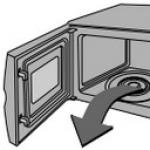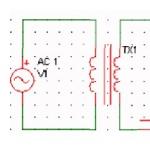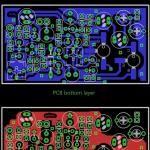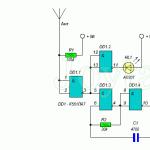The main lines and tasks of the development of the baby, the creation of a developing environment, what toys a child needs at 4 months, what a child can do at 4 months.

A child at 4 months: features of the development of the baby, games and exercises that the baby can do
The main line of development of the child at 4 months
The most important line in the development of a baby at 4 months is the development of his sensorimotor motor activity. The child at this time learns to change the position of his body, which gives him additional features for physical and mental development. He becomes more active. The baby grabs and feels the hanging rattles and toys, learns to intercept the object from the mother's hand. The kid will know different properties objects - color, surface character (smooth, rough, hard, soft), sound, mass (light - heavy), shakes toys, shakes, hits, tastes.
Therefore, at this age, the baby needs a developing environment that will support the formation of these new skills and will contribute to the consolidation of already formed skills.
What toys does a 4 month old baby need?
At this age, it is very important to teach the baby to grab toys. Therefore, first of all, the child needs gripping and holding toys(rattles with a comfortable handle, rattles - pendants, rattles - rings, rings with bells or bells).

The most comfortable handle- This is a strong, round in section handle of a rattle, similar to the handle of a wooden spoon. Alas, now there are not so many such rattles, and many mothers make them themselves. The ancestor of such a rattle was a shambler - an old Russian toy made of birch bark. Sharkunkas have a very comfortable handle, adapted to the size of a child's palm. The sound of the sharkun is soft, rustling. Sharkunki are still made by craftsmen and sold at fairs. But you can't find them in stores anymore.

CHILD DEVELOPMENT CALENDAR:
At 4 months, grasping toys are hung in the crib low over the baby's chest so that he, waving his arms, bumps into them and begins to attract, grab, and feel them. The distance from the toy to the baby should be equal to the outstretched arm of the child so that he can reach them.
By 5 months, toys gradually begin to hang up not only so that the child can accidentally get them, but also a little further to the left or to the right - so that he begins to reach for them, direct his arms towards them, he can shake them, pull.
By 5 months, the baby learns to take the toy from the mother's hands (in the position on the stomach) and hold it in his palm for a long time (from 30 seconds to 1 minute).
The child also needs demonstration toys- roly-poly, multi-colored plot toys, rubber toys. You show the toy, name its parts, actions, read a poem, sing a song about it. In this case, the baby lies on his stomach. These toys should be voluminous, attractive, bright.
For the development of auditory perception need toys with different sounds. It can be a tambourine, a metallophone, a drum, bells, noise jars and boxes.
To make noise boxes, take jars from baby food or from kinder surprises and put different fillers in them. In one - peas, in the other - a nut, in the third - beads, in the next - buttons. Close and screw the lids on the jars tightly.
If you give the noise boxes to the baby, then they must be safe for him. To do this, they must be sewn into a bright fabric case, so that even with unexpected discovery nothing came out of the jar. Otherwise, the baby may accidentally open the box and swallow the filler.
To develop tactile sensitivity you can sew fabric pads from fabrics of different textures and different color. At the same time, fill them with different sounding fillers - sew in a bell or a beaded box of kinder surprise or rustling wrapping paper. If at 4 months the baby will only feel them and make sounds, then later, when he grows up, you will be able to find pairs of pillows by color, by sound, by weight (heavy - light). Pillows can be either the same shape (all square) or different shapes (herringbone, house, fish, etc.).
Also, to develop tactile sensitivity, you can hang bells on a crossbar or cord, tying cords of different textures to them and different section. The kid touches the cords, pulls on them and hears the melodious chime of the bells.
Toys to buy natural shades- colors of wildlife - sky, wood, sand, grass (blue, yellow, green, orange). The sound of toys should be varied.
In the fifth month of life, you need to lay the baby on the tummy more often and put toys close to the baby so that he reaches for them, changes his body position, gets them, and not just lying on his back accidentally touches them (as it was in the fourth month of life).
Toys should be changed every 2-3 days, as a familiar toy no longer attracts the baby's attention. To do this, the entire "arsenal" of toys can be divided into four parts and offered in turn (change). Do not give all the toys to the baby at once - this scatters his attention.
All toys (including those that we demonstrate to him) must be given to the baby in order for him to listen to the sound, examine, stroke, taste, smell. The more active the baby in the knowledge of the world, the better he develops.
You may have noticed that I do not write anything about the so-called audio and video educational programs for babies, which say that they are recommended for children from 3-4 months old for their learning and development. Why? Because in fact, these programs do not develop the baby and do not teach him, but rather, on the contrary, they tire and cause difficulties in further development. Studies have shown that the main developmental stimulus in the first year of life for a child is the mother's speech! And the quality of this speech determines the success of the child in the future - and not only the level of his speech development, but also the level intellectual development. Moreover, it is the speech of the mother that develops the baby, and not the audio recording or video recording of someone else's voice, since the baby distinguishes the mother's voice from other sounds from a very early age. Therefore, it is important to talk with the child while putting to bed, waking up, changing clothes, bathing, playing and exercising, using pestles and nursery rhymes, lullabies.

What can a child at 4 months
- The baby confidently holds his head both lying on his stomach and in the vertical position of the body when he is carried in his arms. When the child lies on his stomach, he rests on his forearms. It is necessary to ensure that the baby does not rest on a clenched fist, but on an open palm.
- The child raises his head in the supine position.
- He feels his hands, plays with them, examines them, takes the toy put into his hand into his mouth (development of mouth-hand coordination). The child feels the handles of the toys, the edge of the blanket or pillow, runs his hands over the toy (development of touch).
- By the fifth month, the cam opens, so the baby can freely take the toy from the mother's hands and hold it in his hand. The kid examines the toy in his hand.
- He knows how to purposefully reach for a toy (hanging over his chest or in his mother’s hands), grab and hold it, manipulate it (development of hand-eye coordination).
At 4-4.5 months, a child can take a toy with both hands, sometimes with one hand.
If at three months the child came across hanging toys, then at four he grabs, feels and examines them. And by 5 months, he will have the ability to grasp the toy - he will clearly take the toy from the hands of an adult.
Of course, you need to make sure that toys for a baby at this age are comfortable to grip.
When a baby reaches for a toy, he looks not only at it, but also at his hand. At 4 months, he is already able to estimate the distance to the toy. But the ability to grab a toy is not yet sufficiently developed, and the baby often goes to the toy not by a “direct route”, but “bypassing”, making loop-like movements, deviating in a different direction.
In addition, the child still captures all the toys in the same way - pressing his fingers to his palm. In the future, having gained experience in grasping toys and objects different shapes, the baby will begin to grasp objects in different ways depending on their shape.
- The child shows interest in different toys, their sound.

- The baby emotionally responds to different intonations of the mother’s speech (affectionate, cheerful, strict), different character musical melody (distinguishes and reacts differently to dance or calm music)
- The child rejoices at the sight of his mother, recognizes her. He can recognize a close adult from a distance of two or three meters, while in the arms of another adult. He recognizes mom and dad and by voice. Distinguishes close people and strangers, reacts differently to them. By 5 months, she reacts to a new environment, may cry at the sight of strangers, examines them for a long time.
- The kid laughs in response to the emotional communication with his mother. He may cry if his mother speaks to him in an unhappy tone.
- The child follows a moving object or concentrates his gaze on a stationary object in different positions of the body: in the hands of an adult, lying on his back, lying on his stomach.
- He finds with his eyes an invisible source of sound (music, toy, mother) - turns his head in the direction of the sound and finds the source of the sound with his eyes.
- A child at 4 months hums melodiously. In cooing, the baby learns to pronounce vowel sounds consonantly mother tongue, trains speech skills. During the fifth month of life, the cooing becomes more diverse - melodious with different intonations.
A 4-month-old baby gurgles for a long time in response to the mother's speech, when looking at a toy, during wakefulness. If the child hears the voice of the mother, then the cooing becomes longer and more varied. Cooing appears only when the child is in good health and emotional state.
By 5-6 months, the cooing will be replaced by separate syllables - babble: mother, woman, father, etc. Babble will indicate that the child hears the sounds of adults' speech, hears himself, has reached a certain level of development of the articulatory apparatus and auditory concentration.
In order for the child to develop preparatory speech skills, it is very important to create silence at home so that the child can hear his own humming. He really needs to learn to listen to himself. If the TV is constantly on in the house, then this background interferes with the full development of the child and his auditory concentration.
- The baby can attract attention with sounds. This skill appears in a child only when they constantly communicate with him, talk. If this is not the case, then the baby does not show interest in an adult and does not attract his attention.
- The child plays roll call with his mother. How to play roll call you will learn from the second part of the article (Games and exercises)
- At 4 months, the baby learns to turn from back to side. This skill does not come to the baby immediately, not “suddenly”. At first, he rises high on his forearms as if he will soon roll over. And then he makes the first turn. When the baby masters this skill, he begins to learn to turn from his back to his stomach. This will happen later - at about 5 months. However, already closer to 5 months of life, many children have the prerequisites for such a turn - they begin to roll over from their back to their tummy in a “block” (that is, simultaneously turning their head, shoulders and pelvis).
The first turns of the baby are very swift, fast, sharp, unexpected, so the children need an eye and an eye! And only then the baby will learn to do them smoothly.
WARNING: VERY IMPORTANT! A child at 4 months old should not be left unattended, even if he still does not know how to turn! He may turn very unexpectedly for you (for example, lose sight of you and start looking for you) and fall.
- The child holds his mother’s breast or a bottle with his hands, with the introduction of complementary foods by 5 months, he begins to eat from a spoon.
- The baby distinguishes colors (that is why we use colored ribbons of different colors to hang toys in the crib, and we select toys for games and activities with the baby so that they are of different colors).
- The child, when sipping his arms, tries to get up and sit down. But the baby at this age is not yet sitting and you can’t force him to sit! Also at this age, you can not put the baby on pillows, leaning against the wall. Why not? A child who cannot sit still cannot change the position of his body on his own, even if the position has become uncomfortable for him. This negatively affects the condition of the child's spine, the further development of movements.
What are the normative indicators of child development? What will he be able to do by the end of the month, that is, by 5 months?
By the end of the month, the baby is able to:
- lie on the stomach for a long time with support on the palm of your hand,
- firmly rest with straightened legs on the table (in a vertical position) with support under the armpits - stands evenly, steadily,
- can turn from back to side
- picks up toys and objects well (purposefully attracts and grabs a toy from a distance outstretched hand from a comfortable body position), holds the toy in the hand from 30 seconds to a minute. In case of failure, it repeats an attempt to grab and hold the object without the mother's promptings.
- distinguishes new toys from familiar ones,
- manipulates toys, actively explores them
- distinguishes close people from strangers, including by voice (speech, singing)
- distinguishes affectionate intonation from angry,
- actively buzzing.
If the baby does not know how to do something, then do not be upset. You just need to practice with it, and everything will work out. Most often, a child has difficulties, if they simply haven’t dealt with him before. parents were in the dark about the fact that even with such a crumb you need to spend special exercises, massage and games. When you start to study and play with the child, he will succeed, even if a little later.
You also need to know that each child has “his own norm”. One will start rolling over a week later, the other a week earlier. It depends on the child himself, and on whether gymnastics and massage are carried out with him, and on many other factors. However, there are very disturbing symptoms that show that the baby needs the help of specialists. What do you need to pay attention to?
Anxiety symptoms in the development of a child at 4 months
You should consult with specialists and take timely measures to help the baby if the child is 4 months old
- lying on his stomach, he cannot raise his body, leaning on his forearms,
- your baby's head tilts back when you lift him to an upright position from a supine position.
- does not try to lean on the tips of the toes when the baby is supported under the armpits and held in an upright position,
- does not smile when his mother talks to him and does not express joy when they play and communicate with him (indifferent to communication with close adults).
The unknown about the known. Secrets of lullabies - the first textbook of life for a child.
What should they be? How do they affect the baby and the mother? What is their developmental role? How to use them correctly lullabies for the development of the child? What is the value of folk lullabies?
Perfected by many generations and centuries, a method of developing babies.
Or on the course cover below for
The first three months, when debugging took place in the work of the stomach, and with them the tormenting colic after eating, are already behind. It's time fourth month- the time when psychological development baby observed big changes. What skills did he acquire during this period? What does the development of a child at 4 months include?
Physical parameters
The baby confidently holds not only his head, lying on his stomach, but also raises his chest, leaning on his half-open palms. The angle between the shoulders and forearms, if measured, will normally not be more than 90 O. At four months, the baby is able to hold the head vertically for a minute or more.
The weight of the child will increase by about 500-600 grams. Such a large weight gain is due to a small physical activity. With each subsequent month, the number of grams gained will decrease. Height will increase by 2 cm.
Thus, on average, in four months, the following picture is observed for these two indicators:
- Weight is from 6 to 6.8 kg;
- Height from 62 to 65 cm.
Do not worry if the weight of the newborn does not match the generally accepted norms and tables. In a series of these articles, attention has already been paid to the individual development of children, as well as the way they are fed. Only too little weight gain (or too much bust) can be considered alarming signs.
Dream
The need for sleep remains high. At four months, babies sleep 16 hours a day, 10 of which are night sleep. The remaining hours are distributed between three daytime sleeps. Some babies by this time allow their parents to rest all night, but in most cases, the mother still has to wake up twice for a nightly feed.
If the child's daily routine is set at 4 months, there will be no problems with going to bed. It is recommended to put the baby to sleep from 7 to 9 pm. If , you should analyze the situation. On bad dream the following factors may influence:
- Late going to bed. An overtired child has difficulty falling asleep and gets up earlier than usual.
- The child is constantly naughty. The reason may be teething or protracted problems with the tummy, aggravated by the evening. If the baby has become capricious, go to the pediatrician.
- There is no ritual of going to bed, or it is broken. This includes the same sequential actions that set the child up for sleep: a bath, reading a favorite book, a lullaby.
- There are many distracting details in the crib. Toys in sleeper, keep the crumbs active, and do not contribute to falling asleep.
Whims before going to bed should not be ignored, you should look for the cause
Nutrition
Babies who are exclusively breastfed have no nutritional change. Through mother's milk, the baby receives everything necessary for growth and development, so up to 6 months there is no need for any complementary foods.
Should I give my baby water? It is believed that with milk he receives enough liquid and cannot be thirsty. But strict rules No. If you offer the baby to drink and he does not refuse, then, of course, it is worth drinking more, especially if it is hot outside. Dehydration at this age is very dangerous.
In the process of feeding, the baby begins to try his mother's breast "by the tooth". Although the teeth themselves are not yet there or the front ones are just erupting, squeezing the nipple with the gums is very painful and unpleasant for the mother. Do not be afraid to wean the baby from such actions: a fright from the mother, a cry will help him realize that you are in pain. If that doesn't work, you can get the nipple squeezing to be associated with discomfort for him as well. For example, it is recommended to close his nose with his fingers for a few seconds: this way he will understand that he is doing it wrong and release the nipple “from captivity”.
The nutrition of a child at 4 months includes another feature: the crumbs tend to be distracted during feeding, look around. Treat this condescendingly: he does not refuse the breast at all, but is simply afraid to miss something interesting.

Breast milk covers all the needs of the child at this age.
The nutrition of a 4-month-old baby on artificial mixtures is somewhat different. About 6-7 feedings are obtained per day, which is almost 1 liter in volume. Sometimes there is a need for early complementary foods, but this is more the exception than the rule. If the pediatrician gives advice to feed the child with "adult" products, it is best to start with cereals.
Some believe that juices should be included in the baby’s diet from almost a month old, and vegetable purees, egg yolk from four. However, remember that juices contain acids that are absolutely not needed at this age for the developing children's digestive tract. The fact that they are on sale marked “from three months” speaks more of a marketing move that promotes a particular product than of care. The benefits of egg yolk are difficult to notice, but the harm in the form of rashes and dermatitis is quite. Therefore, do not rush, everything has its time.
Bathing and walking
Bathing, as before, brings a lot of pleasure, only now during the procedure the baby swings his arms and legs more actively, hums happily. Bathing with toys brings a special pleasure.
The child's regimen should include daily walks on fresh air at least 2 hours a day. And you need to walk in any weather.
Core Skills
- Rollovers from the tummy to the back or sideways occur easily and naturally.
- The kid rises in his arms, knows how to hold his head well.
- Crawls on his stomach like a plastuna for a toy he likes.
- If you support him by the armpits, you can see how the baby rests his toes on the surface and pushes off from it.
- Hypertonicity of the hands is already absent (it may still be present on the legs).
- He sits down from a prone position when he is pulled up by the handles. This movement can be used as an element of charging, but it is not yet possible to fully land due to weak back muscles.
- He holds the toy well in his hand, knows how to rattle it.
- Fingers in the mouth are common.
- During feeding, the baby holds her mother's breast.
- He already takes it well. bright colors especially yellow and red. But toys should not be oversaturated with color scheme. Three or four colored components per toy is enough. At this age, the baby does not just see, he follows the moving object with his eyes.
- The baby turns his head after the source of noise, speech, recognizes his relatives by voice. If he hears rhythmic music, he may shake his head to the beat. Develop a sense of rhythm by clapping in front of the baby to the beat of the music with your hands.

good exercise for a 4 month old baby
Features of psychoemotional development
The skills of the crumbs are connected not only with his physical development, changes are observed in other areas of his life:
- Communication skills. At the sight of a mother or someone close, the baby perks up, gives a smile, actively pulls his arms and legs. The cooing becomes more and more distinct, open vowels “a”, “o” are clearly audible, sounds similar to the consonants “m”, “p”, “b” are caught. Responds to his own name.
- At 4 months, the baby is able to express a whole range of emotions: joy, resentment, fear, curiosity.
- There is great interest in the study own body. The child likes to touch his face, legs, look at himself in the mirror.
- The ability to establish causal relationships is traced. For example, at the sight of mother's breast, the baby freezes in anticipation, realizing that now there will be feeding.
- First reaction to strangers- alertness. Further, she turns either into crying, or into accepting a stranger with a curious examination. If the mother changes, for example, dyed her hair, cut her hair dramatically, put on glasses or a hat, the baby may not recognize her.

Looking at yourself in the mirror is a very interesting activity.
Games with a baby
Activities with the child should include games that develop fine motor skills and communication skills.
- “Okay”: mom puts the baby on her knees, shows how to clap and says a rhyme: “Okay, okay, where were you? By Grandma...". Such a game helps to open the palms to the fullest.
- "Magpie Crow". This game provides for circular movements with a finger in the center of the palm, which has a beneficial effect on work. gastrointestinal tract.
- "There is a horned goat" also brings joy to the kids, causing them to laugh.
So, at 4 months, the child's behavior becomes more and more meaningful, bringing joy to the surrounding relatives and parents. Since the baby skillfully rolls over, acquires crawling skills, in no case should he be left alone, even on a large bed. IN next month you have to observe even greater accomplishments and small victories on the path of the development of the baby.
With small children, you should be especially attentive and caring. You need to know what they can and cannot do. It is in the first years of life that the baby forms the main functions of the body. This process is influenced by many factors, such as the daily routine, the emotional situation at home and, of course, nutrition. It is about him that we will talk today.
About the transition from breastfeeding to regular food
It's no secret that the food of one-year-old children is significantly different from the nutrition of older children and, especially, adults. Do not forget that a newborn baby feeds on mother's milk and only then switches to more “heavy”, solid food. The process of transition is, of course, gradual. No one offers to immediately feed a six-month-old baby fried chicken or pork ribs. Not at all, at first the child is “transplanted” to semi-solid foods like purees and juices. This food is fairly easy to digest. digestive system, but it is no longer mother's milk as such. At the same time, it is necessary to observe measure and caution in everything, if you do not want your child to develop allergic reaction.
What to feed? What can be given to him and what not? What foods are harmful month old baby? How to make the transition smoothly?
Let's look at everything in order.
To feed or not to feed
It is worth noting the fact that at 4 months the baby can already begin to give complementary foods. To feed or not is always at the discretion of the parents. Of course, the basis is in any case breastfeeding.
It is important to understand that you should not give special feeding without a clear need - at least that's what doctors recommend. It is best to postpone this period until the age of at least 6 months. IN early age it is most important for a baby to give breast milk, and excessive "passion" for other types of food can contribute to the development of an allergic reaction. We think it makes no sense to explain to young parents what complications this can lead to at a more mature age.
When does it become necessary to add special mixtures to the diet? We answer. In the event that breastfeeding is no longer able to give the baby enough nutrients. Just during this period, the baby begins to produce its own saliva, and the parents have the opportunity to give, in addition to mother's milk, more solid food - the same nutrient mixtures.
What exactly to feed
What can you eat at such a young age? In this matter, the opinions of various nutritionists may differ. Some experts are of the opinion that it is necessary to eat mixtures based on vegetables or drink vegetable juices. Others lean towards fruit-based juices and purees.
Be careful! The baby may have an unaccustomed occurrence of an allergic reaction. For this reason, we start complementary foods with small portions - you need to give his body time to adapt to more solid food compared to milk.

Basic Rules
- Start with one particular product. Why is this needed? This method will allow you to timely identify the product that causes allergies in the baby, and, accordingly, exclude it from the diet for an indefinite period. Start eating little by little.
- In the case when you decide to start the process of complementary foods with fruits, you must first feed the child with apple juice. It is very important that this juice is fresh and natural origin. Shop options are not even considered! If you do not notice a rash and diarrhea in the baby, then you can continue to give him juice (but at first in small quantities!). After the first month, you will be able to give your child 30 ml of this drink at a time.
- Please note that you should not try to cram all the daily allowance juice at a time! In addition, do not forget that you can not mix juices of different types during the meal.
- As a rule, first the baby is offered complementary foods and only then breastfeeding is given. In the case when the child does not want to eat complementary foods, you must first breastfeed him, and then complementary foods. Remember the rule: no more than one new product per day!
- The amount of each new product consumed during the week is adjusted to a full serving. Then it becomes possible to add a second product to the diet, also mastering it within a week. And already in the third week you will be able to alternate these products with each other. At the same time, of course, look at his reaction to all these products!
- When the baby reaches the age of four months, parents have the opportunity to make vegetable puree for their child. Please note that it is freely available in many grocery stores in special glass jars. Remember that factory-made food does not need additional salting and adding oil. Sugar is also not worth adding.
- If you see ingredients such as tomatoes, garlic, onions, various kinds of spices in the composition of a particular mixture, then you should not buy such a product. The fact is that doctors are against children eating food with similar components.
- There is an opinion that it is very difficult to adapt a baby to vegetable puree. The fact is that vegetable puree contains much less sugar than human milk, so for a child it will be very unusual in taste. In some cases, it becomes necessary to feed a new dish several times, until your child finally gets used to it.
- Don't let too much blunder- do not feed the baby porridge! Otherwise, as your child gets older, they may not perceive vegetables as appetizing food.
- It is necessary to reckon with the fact that it is the results of the first complementary foods that will largely determine how things will turn out with the subsequent nutrition of your child. If you do not carefully choose food for him, if you feed everything indiscriminately, then at an older age you will get a sick and obese child.
- For the first feeding, the following vegetables are perfect for you: cabbage, zucchini, potatoes. Why exactly them? The fact is that these vegetables are less allergenic compared to all the others. After some time, you can add carrots and beets to this list.
As a conclusion, I would like to once again recall the main points regarding whether it is possible to give additional complementary foods to a child at the age of about four months? And if possible: which one, how often and in what quantities? All these questions, of course, are of great concern to young mothers who are afraid to take the wrong step, and thereby harm the health of their child.
So, you can give complementary foods to your baby, starting at four months. But it is worth treating this issue with the utmost caution and thoughtfulness. After all, the slightest bust with the number of servings - and now the baby begins to develop an allergic reaction. Among other things, it is still very dangerous with those complications that may appear and develop at a later age. Here, as they say, the message “take care of your health from a young age” is relevant!
As always, we want to wish our readers patience, attentiveness to their children, love, care and warmth. Our children are the most valuable thing we have. Take care of them, and in time they will protect you and take care of you!
The development of a child at 4 months is more active than before. The kid has finally adapted to the world around him and is ready to learn new things every day. Both the psychology and the body of the child are changing. Height and weight increase, and the emergence of new skills pleases parents.
- The kid is able to grab a toy that has a small weight and hold it in the handle for 30 seconds. He understands that the rattle needs to be shaken in order for it to make sounds.
- The child should be able to roll over from the tummy to the back and vice versa.
- In the prone position on the tummy, he can rise on the handles, while holding the head.
- If you hold the baby by the armpits, he should rest on the floor with his toes and push off.
- The child basically opens his palms. He should be able to put his palms together and pat them a little.
- The baby can put his fingers in his mouth.
- During feeding, he tries to support his mother's breasts himself, his weight already allows him to do this.
- The child reacts when called by name.
Physiology of the child
The weight of the baby for the 4th month increases by 700-800 grams, therefore total weight the baby reaches 6-7 kg. The circumference of the chest and the circumference of the head increase. Growth also becomes more by several centimeters. At four months, the normal height of a baby is 60-63 cm.
The proportions of the body of the baby become more harmonious. If at birth the head was very large in relation to the whole topic, then by 4 months it becomes proportionally smaller. Too large a head at this age can indicate a number of diseases. Therefore, a medical examination is required.
Feeding a four month old baby
For kids on breastfeeding breast milk remains the only food in the diet. If the baby has no health problems, and the mother’s milk is enough to saturate him, then you should not introduce any complementary foods.
Feeding is usually six times a day. But sometimes babies at four months are already switching to food 5 times a day. For children who are bottle-fed, the introduction of the first complementary foods is possible. If there is a tendency to liquid stool, applesauce is suitable as a complementary food. Babies prone to constipation are given mashed and grated prunes. The total amount of any complementary foods starts with a quarter of a teaspoon, gradually increasing to several teaspoons. In the event of an allergic reaction to any type of complementary foods, you should immediately stop using it.
If the baby was born prematurely or in the cold season, it will be useful to give him cottage cheese. The use of this product prevents rickets. Only very fresh cottage cheese without lumps, almost liquid, is suitable for a baby.
In the fourth month of life, there is an increase in the total amount of food consumed, which is 150-170 ml.
Breast care
At four months, the baby already begins to grow hair on the head. They are still short. But even because short hair possible excessive sweating of the scalp. In this case, be sure to cut the hair.
Nail growth at this age also requires attention. They need to be trimmed periodically so that the baby does not scratch himself and cannot comb the body with his nails. Nails on the hands are cut in an arcuate line, and on the legs - in a straight line. This will prevent the nails from growing into the skin.
The fourth month is a time of great activity for the child. He moves his arms and legs while lying in the crib. Therefore, it can easily throw off a blanket or diaper. Once in a cooler environment, the baby freezes and can urinate. A wet baby gets supercooled pretty quickly. Mom does not always have time to react and change clothes for the baby. And hypothermia leads to colds.
That is why importance has hardening. For a 4 month old baby, these are rubdowns, which are usually done after bathing. The whole body of the baby is wiped with a damp sponge or damp towel. First, the mother wipes the baby’s chest and arms, then puts a shirt on him. Then he rubs his feet. During the whole process, you should talk with the child, gently pronounce your actions. This will calm the baby, he will not be capricious.

In the fourth month of life, the baby occurs an important event. He must prepare for the DPT vaccination. It acts against tetanus, diphtheria and whooping cough. She is also vaccinated against polio. DTP is done three times, the intervals between vaccinations are 6 weeks.
To safely get vaccinated, the baby must be healthy not only at the time of vaccination, but also a month before it. If the baby has developmental disabilities, the pediatrician can set a special vaccination schedule and prescribe medication to prevent the consequences.
child in last days new products should not be given before vaccination. It is also necessary to strictly observe the daily routine and monitor the observance of cleanliness. If one of the relatives is ill with acute respiratory infections, it is undesirable for him to approach the child. Wearing a mask is mandatory to prevent the spread of infection.
On the first day after vaccination, the infant has a decrease in appetite, an increase in body temperature, and he is naughty. This is normal, but the next day the temperature should drop. If the fever persists or a rash develops on the body, you need to see a doctor.
We develop the baby
How to develop a child at 4 months? Special meaning for the baby acquires a daily regimen. Bedtime should be the same. Many mothers introduce their own bedtime rituals that help the child relax, calm down and fall asleep quickly. It can be light strokes, a lullaby or the quiet sound of calm classical music.
A 4-month-old baby will walk longer than at an earlier age. It is advisable to go for a walk with him twice a day.
Staying outside in summer can be up to 2-3 hours. In winter, walks are not so long, especially in frosty weather. And yet it is advisable to walk with the baby for at least an hour.
At 4 months, babies often ask to be held by their mother. It is not surprising, because from a height they can better see the world around them. But do not go with the baby on about. His height and weight are quite large. It can be too hard for mom to carry her treasure in her arms. In addition, the baby will soon get used to and will be naughty if left in the stroller.
But the father is quite capable of lifting the baby in his arms. His height and weight should not confuse the parent. But how much joy the baby will experience, examining the surroundings from a height.
At 4 months, the baby continues to actively walk and coo. He gradually learns the language, listens to his mother's speech. Therefore, be sure to talk to him, read poems and fairy tales. Let your speech be gentle and expressive. This will create emotional comfort for the baby.
Try to teach your child to speak vowel sounds. He will repeat after you. Organize a small puppet theater. Actors can be toys in the form of animals. Move the toys, imitate their voices, play a mini-performance in front of the baby. Try to show emotions during the performance: joy, surprise, chagrin. It is now important for a baby to be able to perceive emotions.
A 4-month-old baby begins to take in his mouth and taste everything around, including his fingers and toes. This is an important part of his development - he learns the world with the help of taste buds. You shouldn't interfere with it. But what needs to be done is to wash all the toys with soap every day.
For the safety of the baby, keep all small items away from him that he could accidentally swallow. Remove all sharp objects, as well as everything that should not be taken into the mouth.
Do not leave things with filler near the crib. The baby can tear them, and the filler will fall into his mouth. In addition, the weight of the toys should not be too large so that the baby does not accidentally injure himself.
When mom is around, you can use a variety of toys. Soft and hard, light and heavy, rough and smooth, big and small. Materials for making toys should also differ: plastic, rubber, wood or fabric. Give them to the baby. Let him feel the toys, while developing tactile sensitivity.
The following toys are indispensable for the development of the baby's vision and hearing: bells, rattles, rubber tweeters, cardboard books with large pictures.
Some babies start teething at 4 months. At the same time, the baby can be naughty and sleep poorly, sometimes the temperature even rises and a runny nose begins. During the appearance of the first teeth, there is an increased secretion of saliva. In order to alleviate the condition of the baby, buy him rubber teethers.
Thus, at 4 months, the child will be able to do much of what was previously given with difficulty. For example, roll over. His height and weight will become larger, his eyesight and hearing will get stronger. Use a variety of toys in games, but watch out for safety. Everything that you give to the baby, he will definitely taste it.
How to get rid of stretch marks after childbirth?
Four months is the time when you can already give complementary foods to the crumbs. However, it all depends on the personal desires of the parents, as well as on the baby himself. What can a 4 month old baby eat? When he is healthy, gradually other foods should be introduced into his diet. Mother's milk will continue to be basic on the menu.
How to feed
It is advisable to remember: complementary foods at 4 months are optional. A crumb at this age is enough and nutrition from the mother. If there is no such need, it is recommended to transfer complementary foods to more late time. A number of medical specialists confirm: mother's milk, artificial mixtures are completely enough up to 6 months of age.
In some cases, it is necessary to introduce complementary foods, because mother's milk cannot cope with the needs of a growing organism. By the fourth month, salt saliva begins to be well produced in the crumbs. The danger of eating more adult foods is reduced, while the needs are increased.
The point of view of different doctors regarding complementary foods at 4 months of age may differ. Some of them advise starting with vegetable dishes, others believe: it is better to feed the child with fruit juices at first, and eventually try fruit puree.
However, if parents decide, perhaps they should start primary feeding with vegetable dishes, because a number of fruits can provoke allergic reactions in children. It is best not to rush - introduce fruits into the diet of crumbs smoothly.
Before you introduce the initial complementary foods from 4 months, you need to realize: an unusual meal may not be to the taste of the baby, and can also provoke allergic reactions. Therefore, start complementary foods with a small amount - half a teaspoon. The child will try a new taste. If allergies do not appear, the portion can be slightly increased, but it is recommended to do this smoothly.
 It is better to add products separately - one at a time. If an allergic reaction is found in the crumbs or the stomach begins to ache, it is necessary to remove this dish from the diet for a certain period of time.
It is better to add products separately - one at a time. If an allergic reaction is found in the crumbs or the stomach begins to ache, it is necessary to remove this dish from the diet for a certain period of time.
When parents decide to start complementary foods with fruit, the child should first be given Apple juice. It should be freshly squeezed, made by hand, not necessarily purchased. If, after drinking the juice, your child does not have rashes, and the stool remains normal, you can continue to give him a couple of drops of juice. So, over time, by the end of the month, the usual amount of juice given to the baby should be increased to 30 ml at a time.
You can not give out the juice that was used for previous feedings. In the children's nutrition departments, you can buy juice in cooked form. It does not contain preservatives, and therefore is optimally suited for a small child. It is not recommended to give out the daily amount of apple juice at a time. It is necessary to divide it into several steps. In addition, juices cannot be mixed with each other; you need to feed the crumbs with only one variety.
Making apple juice at home is easy. A juicer will not be needed at first, because the baby is not yet allowed to drink it in large volumes. The fruit must be rubbed on a grater, then put everything in gauze or bandage, squeeze it drop by drop onto a teaspoon. It is recommended to feed the baby with a spoon. After increasing the portions, you can buy a drinker mug.
Often, the baby is first given complementary foods, then breast-fed. If the child immediately refuses to eat complementary foods, he will need to be breastfed, and after that - complementary foods. At the initial stage of the introduction of the first complementary foods, it is better for the baby to try no more than 1 product per week.
Offering the baby a new ingredient, its amount is increased a week before the whole serving. On the next you will be able to enter 1 more, on the 3rd week alternate those with each other. We should not forget to follow how the body reacts to new foods in the diet.
What can you give a baby at 4 months
From the fourth month, you can cook vegetable puree for crumbs. You can buy it in stores already in ready-made, in a jar. There are several types of ready-made food, they depend on the level of grinding. For children at this age, homogenized nutrition is suitable. Do not forget that the prepared food does not need to be salted, add oil there. Sugar crumbs at 4 months of age are not yet needed, as well as at 6 months.
Some manufacturers from abroad are trying to improve the taste of food by adding tomatoes, onions, garlic, a little bit of spices, recommending giving such dishes starting from 5 months. But Russian doctors do not advise young children to use such products, because it is too early for their body.
Often parents are sure that introducing vegetable puree into the diet of children is quite problematic. After mother's milk, it will not seem so sweet in taste - sometimes the mother needs to give a new dish to the baby several times for him to accept it.
Vegetable lure is easy to cook yourself. For this purpose, you will need vegetables, a little butter, which is another 1 new product in the children's diet from this age. Vegetable oil you can enter already from the age of 4 and a half months.
Some of the parents give up, switch to feeding porridge. In such a situation, they make a huge mistake, because after such cereals, the child in the future may completely refuse vegetables.
Also at this age, it must be taken into account that the future nutrition of the baby depends on the first complementary foods. If the mother gives everything to him, after a couple of years, the crumbs may have digestion, and this entails obesity and a number of other diseases.
Good vegetables for the first feeding are as follows:
- cabbage;
- vegetable marrow;
- potato.
 These foods are less likely to cause allergies than others. A little later, the crumbs can be offered to eat carrots, beets. Of course, all vegetables should be served in a mushy, chopped state.
These foods are less likely to cause allergies than others. A little later, the crumbs can be offered to eat carrots, beets. Of course, all vegetables should be served in a mushy, chopped state.


















